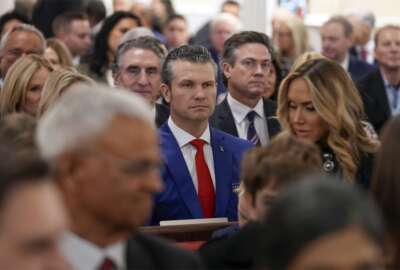Information and intelligence: The unseen weapons of Special Operations
For U.S. Special Operations, detailed knowledge of its surroundings now and where its operators may be headed is an essential component of dominance.
For U.S. Special Operations, detailed knowledge of its surroundings now and where its operators may be headed is an essential component of dominance. Flying surveillance platforms, both manned and unmanned, typically form the forward eyes and ears of Special Operations, no less than for regular military units.
With the advent of high definition video and Internet of Things applications, the gathering, assimilating and analysis of large data sets requires contractor support.
One group providing that support is headed by Kevin Lansdowne, Leidos senior vice president for airborne integration and ground processing systems. He’s a 27-year Army veteran with more than 40 years in intelligence, surveillance and reconnaissance.
Lansdowne points out that often, a given platform might be flying half a dozen sensors gathering high definition video, radio signals, and other data. Because Special Operations typically wants real time surveillance and situational awareness, it’s not enough for the collected data to accumulate on the platform for later transfer to ground processing. That happens too, but often the data is also transmitted immediately to ground observers during the flyovers.
Compared to other forces, Lansdowne says, Special Operations “has a huge appetite for … realtime data. They want it now and they want to use it to prepare themselves for whatever they’re doing.”
He adds, “Leidos is very flexible. If the customer wants or needs something, we try to meet those needs. The one thing important to Leidos is supporting the warfighter. When I think about my number one priority, it’s how can we support that person on the ground to be safe, execute the mission they’re given, and come home.”
In this interview, Lansdowne describes the types of systems Leidos integrates for Special Operations, and the intensity of SOCOM information requirement. He also discusses the challenges of satisfying both contracting and other headquarters elements, and the field forces for which data and data analytics are critical matters. Listen to also get a sense of what life is like for contractors who must go where Special Operations people go.
Copyright © 2025 Federal News Network. All rights reserved. This website is not intended for users located within the European Economic Area.
Related Stories
Featured speakers
-

Kevin Lansdowne
Senior Vice President, Airborne Integration and Ground Processing Systems, Leidos
-
Tom Temin
Federal News Radio
On DoD
Upcoming Events
Related Stories
Top Stories

Kevin Lansdowne
Senior Vice President, Airborne Integration and Ground Processing Systems, Leidos
Kevin Lansdowne is currently a Senior Vice President at Leidos and leads the company’s Airborne Integration and Processing Systems Operation, which specializes in the development, operations, and maintenance of both manned and unmanned airborne systems. Mr. Lansdowne leads a team of engineers and scientists whose systems have flown thousands of hours supporting the warfighter in combat zones as well as on the ground processing and exploiting mission critical information.
Mr. Lansdowne holds an MBA from the University of North Carolina’s Kenan-Flagler Business School and is a retired U.S. Army pilot – having served for nearly 28 years.
Tom Temin
Federal News Radio
Tom Temin has been the host of the Federal Drive since 2006. Tom has been reporting on and providing insight to technology markets for more than 30 years. Prior to joining Federal News Radio, Tom was a long-serving editor-in-chief of Government Computer News and Washington Technology magazines. Tom also contributes a regular column on government information technology.






